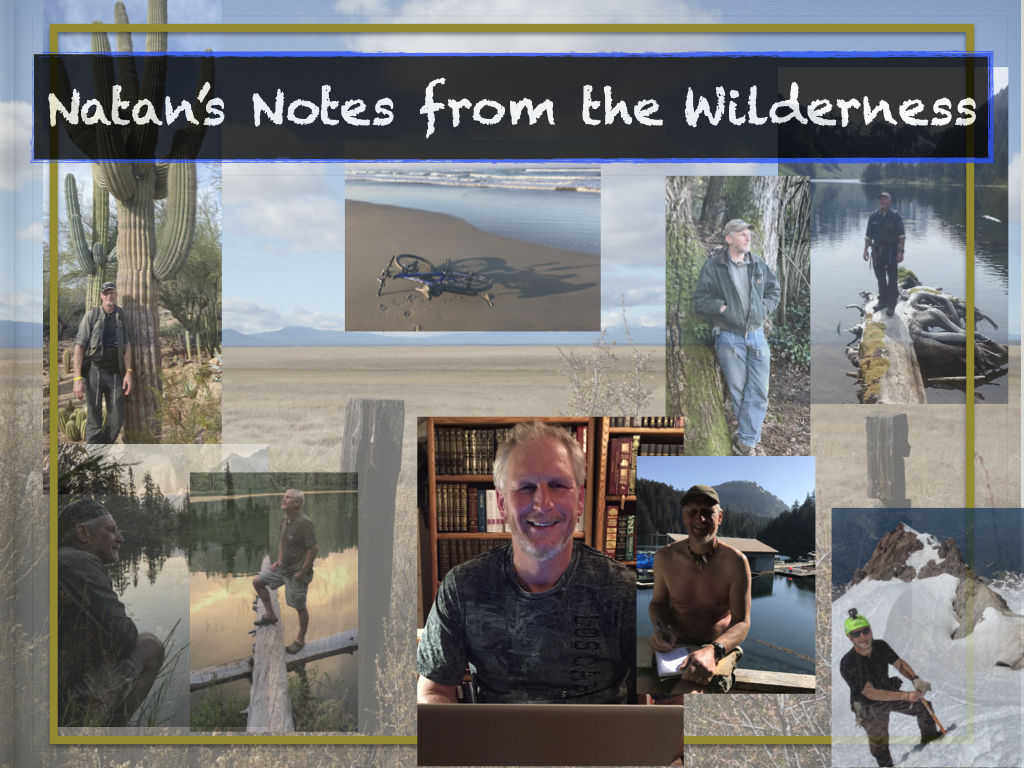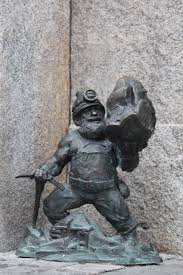
Psalm 46:1–11, Amidst geo-political turbulence, divine protection and a heavenly lifeline exists for the saints. What is the overall message of this psalm? Even though the chapter subheading of my NKJV Bible, for example, describes this psalm as “God the refuge of his people and conqueror of the nations,” there is a deeper, more inspiring message to be discovered here that this title misses. Let’s dig into this precious morsel of the Word of Elohim to discover what this life-changing message is.

When it comes to discovering the hidden golden nuggets in Scripture, one must be willing to become a spiritual hardrock miner who is not averse to the difficult work of picking away at the seemingly unyielding and implacable rock and soil to uncover the mother lode of hidden treasure underground. Like digging for gold, the deeper one digs into Scripture and the more time and effort one invests in the process, the more likely one is to pull the unspeakably valuable treasures out of the spiritual bedrock of the Bible. I have been digging into this Rock of Ages daily for more than fifty years, and my heart and mind still tingle and pulsate with enthusiasm (please look up the meaning of the word enthusiasm for a cool nugget of truth that reveals why I purposely chose this word) when I discover new treasures therein.
To uncover these nuggets that lay below the surface words of Scripture, it is critical to understand an important fact: There are at least four layers of understanding to be found buried in the Word of Elohim. Let’s discover and briefly explore what these are.
Laying on the surface of Scripture, we find the peshat or literal meaning of what has been written. For example, a literal man named Noah built a literal ark of wood that floated on a literal flood of literal water, Moses led the children of Israel out of Egypt, and Yeshua was a carpenter’s son from Judea who lived in the first century. On a moral or philosophical level, the ten commandments, for example, are literal rules of righteous conduct that apply to our daily lives.
Digging deeper, we come to the next level as we drill down deeper into the Word of Elohim. This is the remez or suggested or hinted at meaning of a scriptural passage. For example, the Torah talks about “an eye for eye” when it comes to criminal justice. This may be taken literally to mean that if you injure someone’s eye, your eye is to be similarly injured as payment for your crime, thus evening the scales of justice. Moreover, an injured eye does not require the death penalty, and the crime of murder requires more than a slap on the wrist. So what this verse is really saying or hinting at beyond its literal or peshat level meaning is that the punishment must fit the crime.
Drilling down deeper into the bedrock of Scripture, we next come to the drash (the Hebrew word meaning “search”) level of Scripture. This often involves understanding a biblical passage from an allegorical or homiletical level. For example, even though Noah built an ark and survived divine judgment against men’s wickedness in it, there is an allegorical understanding to this story as well. Noah can be viewed as a Messianic figure who saves those who believe his message of repentance and righteous living, and are thus accorded an escape from divine judgment, even as Yeshua the Messiah does the same for those who believe him and place their trust in him.
At this point, it must be noted that although many scripture passages that have a peshat-level meaning can also be translated allegorically, some scriptures were written only with an allegorical meaning. For example, Elohim in several Scriptures is described as a having wings under which the saints can take refuge, or as a rock or fortress for his people. Similarly, Yeshua is likened to a door, and the saints are to be the salt of the earth. Obviously, these descriptions are not to be taken literally, but to be viewed as similes and symbolic metaphors.
The fourth or final level of scriptural understanding is the sod or hidden or mystical level. The book of Revelation, for example, contains many drash and sod level passages. The 666 mark of the beast passage of Revelation chapter thirteen is such an example. To this day, biblical scholars are still trying to unveil the meaning of this mysterious verse. Is it literal or symbolic? Is there a numerological meaning to 666? If so, how and what does it apply and to whom? Many theories have been proffered, but the exact meaning still remains a mystery.
This has been the briefest introductory overview to the four levels of biblical interpretation. Suffice it to say, when one reads the psalms (or any scripture passage for that matter), to better discover the deep treasure hidden therein, it is beneficial to keep these principles in mind.

To my mind, as in hardrock mining in search of a vein of gold, only after hours or even days of quiet, prayerful, meditative reflection, while at the same time keeping the principles of peshat, remez, drash and sod in mind will such a psalm as this one yield its priceless treasures of divine revelation—its manna from heaven, so to speak.
The writers of the psalms were deeply thoughtful and reflective; they didn’t just fling words indiscriminately like mud up against a wall hoping that something would stick. Although the different sections of Psalm 46 my seem disjointed and disconnected, the psalmist’s juxtapositioning of seemingly unrelated topics begs, or invites, the reader, like all thoughtfully constructed poetic literature, to reflect on, ponder and dig deep to discover the author’s hidden often enigmatic or verbally encrypted message.
So now let’s see what heavenly treasures we can uncover from Psalm 46.
In the first section or block of thoughts in Psalm 46 (vv. 1–3), the psalmist-artist paints a picture in the reader’s mind. He presents us with the solidity of Elohim and the idea, as disconcerting as it may be, that earth may not be as immobile and permanent as it seems and we may wish it to be. Anyone who has lived through an earthquake, a volcanic eruption, a typhoon or hurricane, flood, mudslide, forest fire or such knows this to be true. Those of us who witnessed the eruption of Mount Saint Helens in 1980 know this fact well. As a teenager, I stood on the top of that pre-eruptive mountain that was subsequently blown to smithereens and scattered as fine dust across the face of the globe. Twelve hundred feet of the mountain’s summit is missing, whole glaciers are gone and there is now a gaping gouge in the mountain’s north and northeast sides. Nothing on earth is as permanent and unmovable as it seems—even a giant mountain like Saint Helens.
In the opening verses of this psalm, the author contrasts the permanence of Elohim with the impermanence and transitory nature of the earth. Even though to the average person’s thinking the earth itself and the mountains that sit thereon seem immovable and permanent, they really are not. And this is the point the psalmist is making. The remez or hint level of this idea is that if we view the mountains as permanent, then how are we to view the governments and nations of this earth? After all, elsewhere in Scripture, mountain are metaphors for the governmental systems and nations of men. Neither are as permanent or immovable as the Creator of the universe and the spiritual dimension at which he exists.
In the next block of thought in this psalm (vv. 4–6), the author suddenly switches gears and paints another word picture for the reader to consider. On the surface, this tableau seems totally unrelated to the first. But is it really?
On this next second canvas, the psalmist paints a picture of the city of Elohim in heaven, and which the book of Revelation prophesies is eventually coming to this earth. This is where the Creator himself dwells far above the earth. At the same time, the psalmist introduces the idea of a tabernacle where YHVH dwells. Immediately, this calls to mind the Tabernacle of Moses, the earthly dwelling place of Elohim among his people (Exod 25:8). What is the connection between the long-gone ancient earthly tabernacle and YVHV’s temple in heaven (which Revelation reveals still exists)? Simply this. While this earth and its seemingly immovable mountains will eventually pass from the scene (to wit, the earthly Tabernacle of Moses has already passed and is currently dust under the foot of man), the spiritual domain of the Creator in heaven will never pass. In fact, from that eternal and spiritual place, there is a spiritual river that flows from heaven to this earth. Scripture refers to this as the river of life that when people “drink” from it, they will experience healing, quenching of spiritual thirst, will be a blessing to others, and eventually attain eternal life in Elohim’s forever kingdom (Rev 22:1–5; John 3:37–38; 4:13–14; Isa 41:18; 43:20; 4:3; Zech 14:8–9; Ezek 47:1–12).
Psalm 46 goes on to suggest that those who imbibe in heaven’s river of life will be blessed with Elohim dwelling in their midst, will experience divine help in their darkest hour in spite of the ragings of the heathen nations, and will be protected from the shakings or political upheavals of the earthly nations around them.
Moreover, eventually the earth along with all of the machinations of the evil men will melt into nothingness when the Righteous Judge of the Universe, the Creator of all things, utters his divine judgments.
Are you now beginning to see the connection between sections one and two of this psalm? We now have before us two paintings, if you will, that are separate yet sequentially related. In the first, the permanence of Elohim and impermanence of this earth and its political systems are contrasted, and in the second, heaven and the government of Elohim is presented with its lifeline to earth—the river of life of Elohim’s presence, which is the ultimate hope of the saints and their eternal reward. Eventually, everything of man will pass, and the earth will melt when Elohim pronounces divine judgment against them both.
We find the third and final painting in this tryptic in verses 7–11, and, as it to be expected, this block is related to the first two literary word picture paintings. What we learn here is that Elohim has a heavenly army—he is YHVH of hosts or armies, and he stands behind his people to defend them. Not only that, he is the Elohim of Jacob. That is, he is in a covenantal relationship with his people, that is, a blood covenant that he contracted with the biblical patriarchs, and that maintains to this day with “the Israel of Elohim” (Gal 6:16), who are under the blood of Yeshua, who are part of the nation and covenants of Israel (Eph 2:11–19), and who are the offspring of Abraham (Gal 3:29). It is this same Elohim who fights on behalf of his people, destroys their enemies with their weapons.
Next we come to verse 10, which is, perhaps, the pivotal, take-away passage of this psalm. Let’s now briefly unpack this most soul-inspiring verse.
In the midst of the current political turmoil and the ragings of evil-doers against all that is good and all who are godly, it is to be expected that the saints will be disconcerted and a tad fearful, at the very least. The mind, will and emotions or soul of any sentient child of Elohim will, from time to time, give in to anxious worry if not heart-palpitating fear. In the midst of this, YHVH encourages his people to “be still and now that I am Elohim” (Ps 46:10). In Hebrew, the word“be still” literally means “to sink down, relax, withdraw, let go or be quiet.” In other words, YHVH is encouraging the saint to chill out, to put it in modern vernacular! Push the pause button on life, take a deep breath, step back from it all, focus in on the proverbial birdseye view of the forest instead of wandering lost and confused in the middle of the trees, and focus on the heavenly perspective. This involves fleeing the confusing cacophony and hubbub of our spiritual Babylonian environment and escaping to a quiet place to listening to that still, small voice from heaven. Sometimes we have to wait patiently to hear a word from above. Remember Elijah in the cave seeking to hear the voice of Elohim? YHVH wasn’t in the great strong wind, nor the earthquake and avalanche, nor the raging fire; rather, he was in the still small voice of silence (1 Kgs 19:11–12).
In summary, the deeper massage of this psalm is that although the outlook on this earth may, in fact, not be good, and even downright terrifying, the uplook is glorious. So, grab onto heaven’s lifeline, river of life and hold on to it for dear life amidst the raging turbulence in the seas of humanity and the geo-political earthquakes that will literally shake and move the economic and political foundations of this earth causing tectonic shiftings thereof to occur. Through it all, YHVH is with his people and will eventually avenge them of their enemies, for a new spiritual existence is coming to replace this present one including a new heavens and new earth with Elohim ruling over it and dwelling in the midst of his people. This is because “Elohim is our refuge and strength, a very help in trouble. Therefore we will not fear, even though the earth be removed and the mountains be carried into the midst of the sea…YHVH of heavenly armies is with us; the Elohim of Jacob is our refuge” (v. 11). This then is the gold, in part, to be mined out of this psalm.



With men this is impossible, it says in Matt19: 26 but with Elohim all things are possible-that means I’m possible-when I thought that, I saw that the apostrophe looks like the Hebrew letter Yod-the first letter of His name! So, what I’M trying to say is when I meditate on Scripture (not sure what level you’d call this ) I see things I didn’t before. When I shared this with my sister-in-law she reminded me that I’M is short for I AM!!!! Just wanting to share that here, blessings, Carol!
666 is an equal lateral triangle representing the dragon, the beast and the false prophet.
John